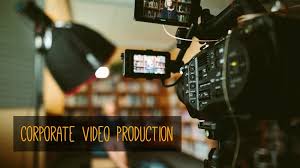Behind-the-Scenes of Video Production








Behind-the-Scenes of Video Production
Creating a high-quality video involves a well-structured process that spans from pre-production to post-production. Here’s a breakdown of each stage in the video production process, highlighting what goes into making a successful video:
1. Pre-Production: Planning the Video
Pre-production is arguably the most critical stage in video creation. This phase sets the foundation for the entire project.
- Concept and Scriptwriting: The first step is to develop the idea for the video. This includes defining the video’s purpose (e.g., entertainment, education, marketing) and creating a script that outlines the dialogue, scene transitions, and key actions. The script serves as the blueprint for the entire video.
- Storyboarding: This is the visual planning stage. A storyboard consists of sketches or images that represent the key scenes, framing, camera angles, and timing. It helps ensure everyone is on the same page regarding the visual style.
- Casting and Location Scouting: If the video requires actors or hosts, auditions or selections are made. Location scouting is done to choose appropriate settings, whether shooting indoors or outdoors, and may involve arranging permits or permissions for filming.
- Scheduling and Budgeting: A production timeline is established to ensure everything runs smoothly. Budgeting is critical to allocate resources effectively, covering costs for equipment, personnel, location, and post-production.
2. Production: Filming the Video
This is the actual shooting phase, where the concepts are brought to life on camera.
- Setting Up the Scene: The crew sets up cameras, lighting, and sound equipment. Proper lighting is essential for creating the right atmosphere and ensuring clear visuals. The set is arranged according to the storyboard.
- Filming: The director leads the filming, ensuring that the action unfolds according to the script. Multiple takes may be required to capture the best shots, especially for complex or high-intensity scenes. The sound department captures dialogue, music, and other ambient noises, ensuring audio quality.
- Directing the Cast and Crew: The director works with the actors to deliver performances that align with the vision. Coordination between the cast, camera operators, lighting technicians, and sound engineers is key to achieving a seamless production.
3. Post-Production: Editing and Finalizing the Video
Post-production is where all the raw footage is transformed into a polished final product.
- Video Editing: The editing process begins with cutting and arranging the footage. Editors use software (like Adobe Premiere Pro, Final Cut Pro, or DaVinci Resolve) to remove any unnecessary footage, align scenes according to the script, and refine the video’s pacing.
- Sound Design and Music: Sound effects, background music, and voiceovers are added during this phase. Sound editing is crucial for creating the desired emotional impact, ensuring clarity in dialogue, and aligning the audio with the visuals.
- Color Grading: Color correction is performed to ensure the video looks visually consistent. Color grading can change the video’s tone, making it look warmer, cooler, or more dramatic. This is a crucial step in adding a professional touch.
- Visual Effects (VFX): Special effects, such as animations, transitions, or graphics, are integrated into the video if needed. VFX can elevate a video’s production quality by enhancing certain scenes or adding visual storytelling elements.
- Final Review and Adjustments: Once the initial edit is complete, the video goes through several rounds of revisions. Feedback from the director, producers, or stakeholders is incorporated, and final tweaks are made to ensure the video meets the vision and quality standards.
4. Distribution: Sharing the Finished Video
After all the hard work in pre-production, production, and post-production, the final step is to distribute the video to the intended audience. This could involve uploading the video to platforms like YouTube, Vimeo, or social media, as well as optimizing the video for SEO to maximize reach.
By understanding the process behind each phase of video production, you can better appreciate the meticulous planning, creativity, and technical skill that goes into creating high-quality videos. Each stage contributes to the overall success of the video, making it essential to manage time, resources, and expectations effectively.
Here are some popular hashtags you can use for video production-related content to boost engagement and reach relevant audiences:
- #VideoProduction
- #FilmMaking
- #VideoMarketing
- #ContentCreation
- #CorporateVideo
- #VideoEditing
- #Videography
- #FilmmakerLife
- #VideoStrategy
- #ProductionCompany
- #EventVideography
- #CommercialVideo
- #ExplainerVideos
- #SocialMediaVideo
- #AnimationProduction
- #VideoMarketing
- #ContentMarketing
- #VideoStrategy
- #DigitalMarketing
- #VideoContent
- #MarketingTips
- #SocialMediaMarketing
- #VideoAds
- #BrandStorytelling
- #EngagementMarketing
- #OnlineVideo
- #ViralVideo
- #VideoProduction
- #YouTubeMarketing
- #MarketingStrategy

